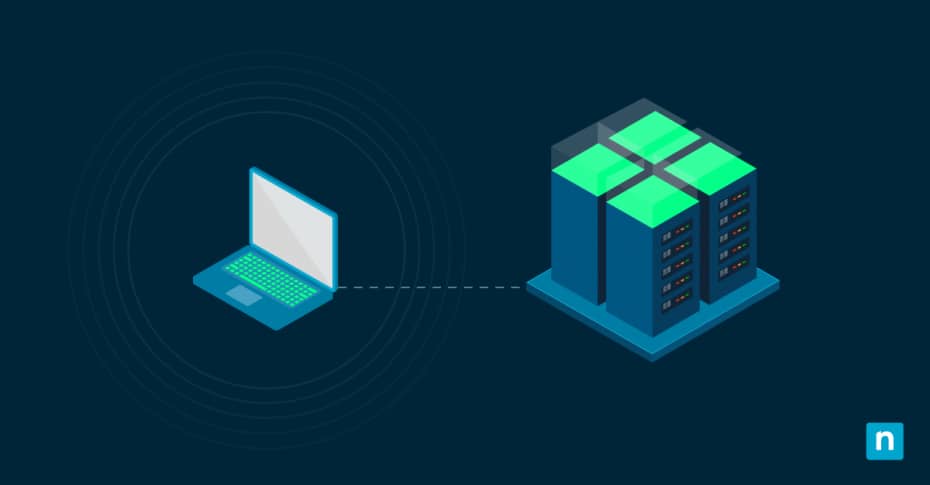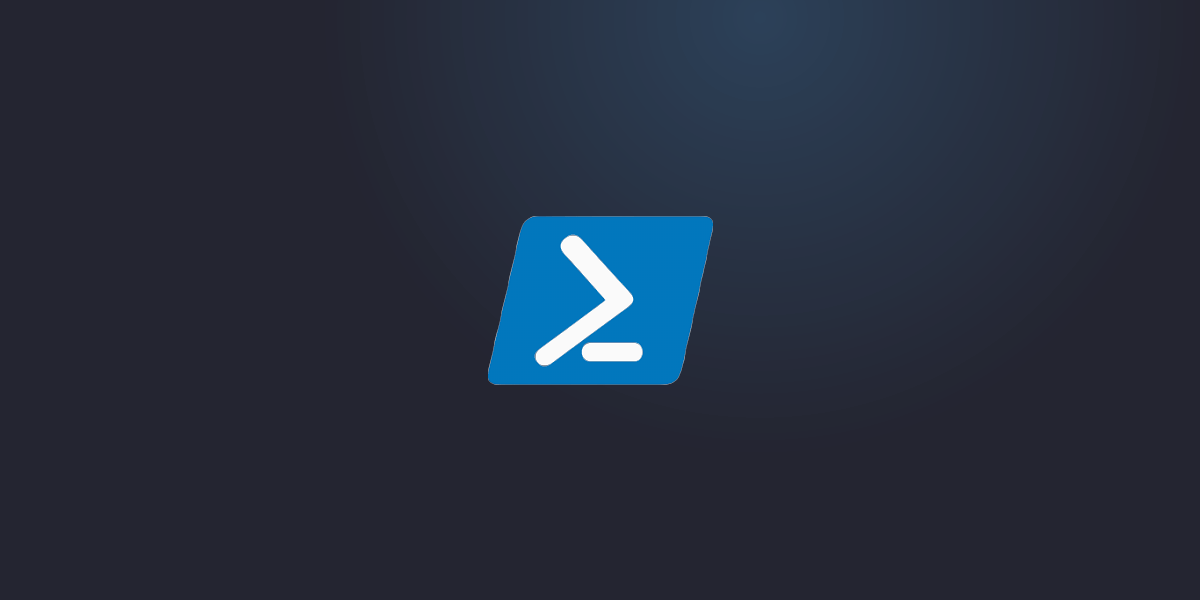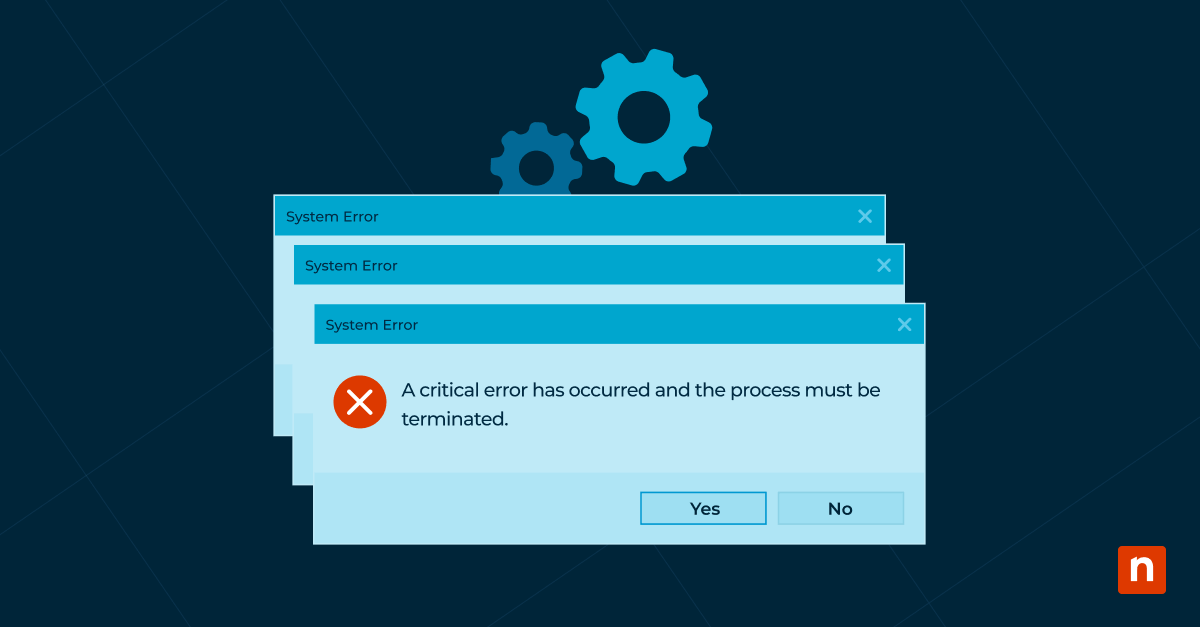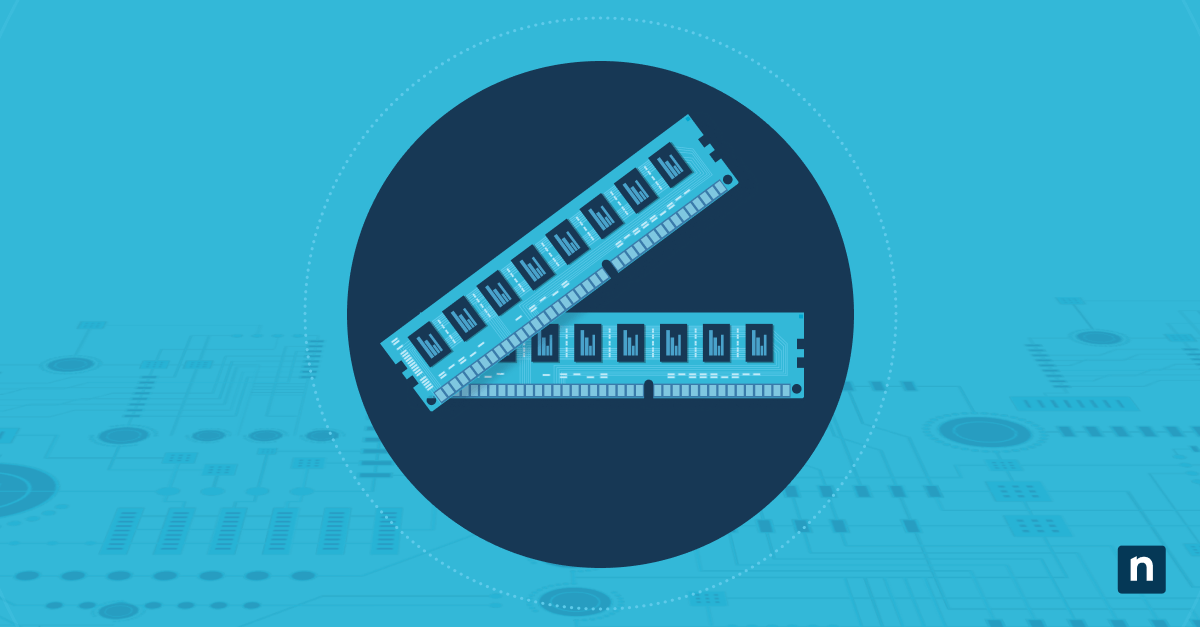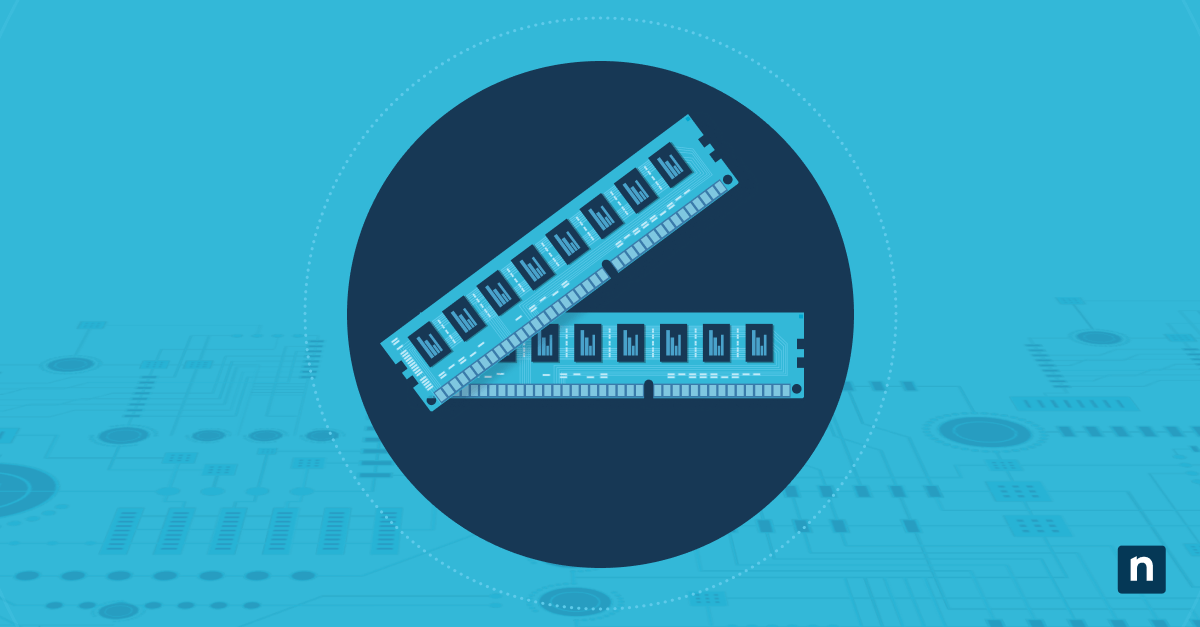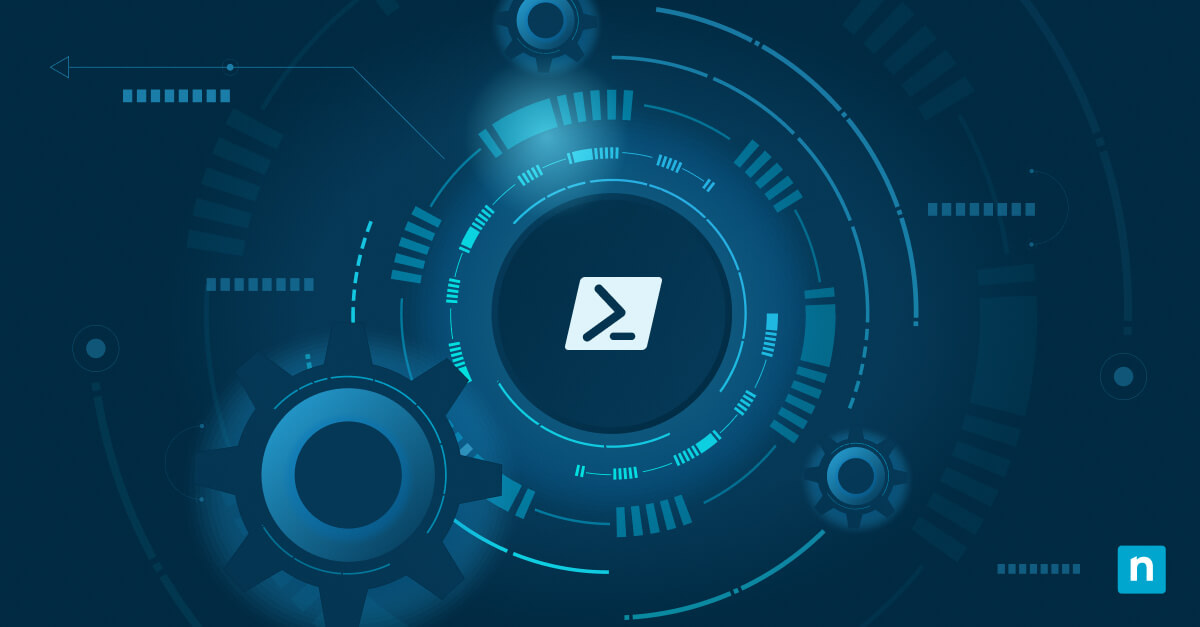Learning how to manage IT infrastructure remotely is an essential capability for businesses of all sizes, particularly with the rise of distributed workforces. With the right tools and strategies, IT teams can effectively monitor and troubleshoot systems from anywhere, ensuring smooth operations and minimal downtime.
This guide will cover best practices for maintaining control over your network, regardless of your team’s location.
Stop reacting—start leading. Learn how to shift to a proactive IT management strategy with our step-by-step guide. Get started.
What is remote IT infrastructure management?
Remote IT infrastructure management refers to the process of overseeing, maintaining, and optimizing an organization’s technology systems and resources from a distance. This involves using specialized tools and software to ensure that essential components of the IT environment remain functional regardless of their (or the IT professional’s) physical location.
The scope of remote IT infrastructure management is broad, covering several critical areas:
- Servers: Managing remote servers involves tasks like performance monitoring, patch management, backups, and security updates to ensure they run smoothly without on-site intervention.
- Networks: IT teams monitor and control network performance, connectivity, and security, often resolving issues remotely to keep operations running without interruption.
- Devices: This includes managing endpoints such as desktops, laptops, mobile devices, and IoT systems, ensuring they stay secure, updated, and functional.
- Applications: Remote management ensures that critical software and applications are properly updated, patched, and operating at peak performance, even when accessed remotely.
- Data: Ensuring the integrity, security, and accessibility of data is key, with remote teams managing backups, cybersecurity, and privacy processes to protect sensitive information.
Together, these elements form the backbone of IT infrastructure, and remote management ensures they remain resilient, no matter where the team or infrastructure is located.
The importance of remote IT infrastructure management
Remote IT infrastructure management offers several key benefits that make it essential for modern organizations:
- Cost savings: By managing IT systems remotely, businesses can reduce the need for on-site personnel, physical office space, and travel expenses.
- Scalability: As a business grows or experiences fluctuations in demand, remote infrastructure tools make it easy to add or adjust resources without the need for significant investments in new physical hardware.
- Improved response times: Remote monitoring tools allow IT teams to detect and address issues in real-time, often before they cause significant disruptions.
- Increased flexibility: Remote management provides flexibility for IT teams to operate from anywhere, which is particularly important for supporting distributed or globalized businesses.
Challenges of managing IT infrastructure remotely
While remote IT infrastructure management offers numerous benefits, it also comes with its own set of challenges. Here are some of the most common obstacles that IT teams face:
Security concerns
Managing infrastructure remotely increases the risk of cyberattacks, particularly when accessing systems over unsecured networks. Ensuring that connections, endpoints, and data remain protected from breaches is a top priority, but it can be difficult to guarantee consistent security across all devices and locations.
For example, a healthcare provider managing patient data remotely or using remote work IT solutions must adhere to strict privacy regulations like HIPAA. Any lapse in security, such as a compromised VPN or unsecured device, could result in significant legal penalties and loss of trust.
Connectivity issues
Reliable internet connectivity is the foundation of remote management, but it can be inconsistent, especially in areas with poor infrastructure or when dealing with global operations. Network outages or slow connections can delay critical updates, limit access to essential systems, and cause significant downtime.
Consider a global logistics company managing its fleet and warehouses remotely. They face challenges when an office in a rural area loses internet connectivity, disrupting communications with key systems and delaying shipment tracking.
Monitoring and visibility
Maintaining complete visibility over remote systems is harder, as monitoring may have blind spots that prevent IT teams from detecting issues early. Gaining a full understanding of system health, especially with disparate devices and locations, can be difficult without the right tools in place.
Take a financial services firm overseeing multiple branches remotely. This company may struggle to get a comprehensive view of system performance across all locations, increasing the risk of undetected security vulnerabilities in key applications.
Maintaining compliance
Meeting IT compliance standards while managing systems remotely adds another layer of complexity. IT teams must ensure that data handling, system access, and reporting meet the specific regulations for their industry, which can be challenging without clear processes and centralized tools.
For example, an MSP supporting clients in the healthcare industry needs to ensure compliance with regulations like HIPAA and GDPR. Managing client infrastructure remotely while keeping up with evolving requirements can lead to compliance gaps if not handled properly.
Addressing these obstacles requires not only robust tools but also a proactive IT management approach to security, monitoring, and compliance to ensure smooth and secure operations in an increasingly remote world.
Key tools and technologies for remote IT management
Effective remote IT infrastructure management depends on the right set of tools and technologies to ensure seamless operations. Here are some essential tools that facilitate remote management and keep IT systems stable and secure:
- Remote Monitoring and Management (RMM) software: Top RMM tools are the backbone of remote IT management. RMM software can monitor thousands of devices simultaneously, alerting teams to problems like system failures or security threats and enabling quick, remote resolution.
- Virtual Private Networks (VPNs): VPNs ensure secure remote access to internal systems and data by creating encrypted connections over the internet. VPNs allow IT staff to safely manage infrastructure from remote locations without exposing networks to unauthorized access, safeguarding data during transmission.
- Cloud management platforms: As more businesses shift operations to cloud servers, cloud management for IT has become crucial. Cloud management platforms provide a centralized way to oversee cloud applications and data. IT teams can manage infrastructure across multiple cloud providers, automate resource scaling, and monitor cloud usage, all from a single interface.
- Automation tools: Automation is key to efficient remote IT management. By automating repetitive tasks, IT teams can focus on higher-level activities, improving overall productivity and reducing human error. Automated workflows can initiate software updates, trigger alerts for security breaches, or deploy configurations across multiple devices, ensuring consistent and efficient management across remote environments.
Remote IT management best practices
The best IT management software follows these best practices. These measures enhance security, improve operational efficiency, and reduce the likelihood of system disruptions.
- Security measures: Implementing strong security protocols is critical for remote management.
- Access controls: Enforce multi-factor authentication (MFA), role-based permissions, and strict password policies to limit who can access key systems.
- Encryption: Used for all data transmitted over networks, especially for sensitive information.
- Regular security audits: Identifies potential vulnerabilities and ensures compliance with industry standards. These practices minimize the risk of unauthorized access, data breaches, and other cyber threats that can be exacerbated in a remote environment.
- Regular updates and patch management: Keeping systems up-to-date is essential to avoid vulnerabilities that hackers can exploit. Remote IT teams should have automated patch management systems in place to deploy updates as soon as they are released.
- Effective monitoring and alert systems: Proactive monitoring is a must for remote infrastructure management. IT teams need to have clear visibility into system performance and health, utilizing real-time alerts to quickly address issues like outages, system overloads, or security threats.
- Documentation and standard operating procedures (SOPs): Clear IT documentation of procedures enables IT teams to respond quickly and correctly in different scenarios. SOPs should be regularly reviewed and updated to reflect new tools, technologies, or security protocols.
Case studies of remote IT management
Case study 1: Financial services, technology
John Kavati, Global Director of IT Operations at Patra, was challenged by a large tech stack and an IT team bogged down by time-consuming manual work. After using NinjaOne, Kavati says his IT team has eliminated 100+ hours per month in manual tasks and removed the need for 18 new technicians.
“The exciting thing about NinjaOne is that it is a one-stop shop. We can do desktop management, remote management, software deployment and patch management. Plus, everything is in one dashboard. That is amazing for us.”
Case study: Healthcare
Derek Dominguez, Systems Administrator of Wickenburg Community Hospital, says that with NinjaOne, he and his team can now efficiently and securely monitor and manage their endpoints while remaining HIPAA-compliant. Additionally, NinjaOne allows him to solve 9 out of 10 problems 100% remotely, saving him hours in traveling to and from the office.
“I’m very happy that we went with NinjaOne. We were able to reduce complexity by consolidating our IT management technology stack down to a single software, reduce software license costs, and make the team more efficient and effective all by switching to NinjaOne.”
Read more NinjaOne customer stories.
Common pitfalls to avoid when managing IT remotely
Even with the right tools in place, remote IT infrastructure management can be prone to mistakes that lead to vulnerabilities, inefficiencies, or system failures. Here are some common pitfalls and how to avoid them:
- Neglecting security protocols: Enforce strict access controls, mandate the use of VPNs for all remote connections, and regularly audit security settings to ensure they comply with best practices. Additionally, frequent security training should be provided for both IT staff and end-users to ensure everyone understands the importance of maintaining secure access.
Expert tip: Is your IT network ready for 2025 and beyond? Watch this on-demand webinar to ensure it remains secure and reliable.
- Over-reliance on a single tool: Use a multi-layered approach to remote management. Combine different tools for monitoring, security, and automation to cover all aspects of IT infrastructure. Regularly evaluate the tools you use to ensure they meet your organization’s evolving needs, and be prepared with backup plans in case a primary tool becomes unavailable.
Expert tip: See how NinjaOne drives radical efficiency and contributes to your bottom line from day one. Download this guide on the economic benefits of NinjaOne.
- Lack of training for IT staff: Provide ongoing training for IT personnel to ensure they are fully equipped to handle remote management tasks. This includes keeping them up-to-date with the latest software, security protocols, and troubleshooting techniques. Encourage cross-training to ensure multiple team members can handle critical tasks, reducing the risk of knowledge silos.
Expert tip: Upskill your IT team and build a learning culture for success. Watch this on-demand webinar for more information.
Future trends in remote IT management
As technology evolves, remote IT management is expected to undergo significant changes. Several emerging trends and innovations are set to transform how IT teams monitor, manage, and secure their infrastructure. Here are some key trends that will shape the future of remote IT management:
- AI and Machine Learning for Predictive Maintenance: Artificial intelligence (AI) and machine learning (ML) are poised to play a larger role in IT management, particularly in predictive maintenance. AI-powered monitoring tools will help IT teams move from reactive to proactive management. Predictive algorithms can identify trends, detect anomalies, and optimize system performance, allowing for more efficient and precise decision-making.
- Edge computing: With the rise of edge computing, more processing is being done closer to the source of data—such as IoT devices, sensors, or remote offices—rather than relying on centralized cloud servers. IT teams will need to adapt to managing more decentralized infrastructure, deploying tools that can handle edge devices and maintain visibility across both cloud and edge environments. This shift will likely drive demand for edge-focused monitoring and automation solutions to ensure seamless operations.
- The growing role of automation: Adopting an automation mindset is becoming increasingly central to remote IT management, helping IT teams streamline processes and reduce manual effort. As automation becomes more advanced, IT teams can focus on higher-level strategic tasks while automated systems handle routine maintenance, monitoring, and troubleshooting. This will increase efficiency and allow teams to scale their operations without increasing workload.
How NinjaOne helps you manage your IT infrastructure remotely
NinjaOne’s IT Operations Management Software, built into its #1 RMM solution, gives you full visibility and control over your entire IT infrastructure, including your Windows, Mac, and Linux endpoints, servers, networks, workstations and laptops, virtual machines, and cloud infrastructure, in a single pane of glass. This robust platform is trusted by 17,000+ clients worldwide to make their IT teams more effective.
NinjaOne’s IT management software has no forced commitments and no hidden fees. If you’re ready, request a free quote, sign up for a 14-day free trial, or watch a demo.
Manage IT infrastructure remotely FAQs
Q: What are the most secure ways to manage IT infrastructure remotely?
The most secure ways to manage IT infrastructure remotely include:
- Using VPNs to encrypt communications and protect data while accessing systems.
- Implementing multi-factor authentication (MFA) to strengthen access controls and prevent unauthorized users from logging in.
- Regularly patching and updating systems to fix security vulnerabilities and safeguard against threats.
- Employing remote monitoring and management (RMM) software with built-in security features like endpoint protection, network monitoring, and intrusion detection.
- Conducting regular security audits to identify potential risks and ensure best practices are followed.
Q: How can I ensure compliance while managing IT systems remotely?
Ensuring compliance in a remote IT environment requires a few key steps:
- Centralize data management and monitor who accesses sensitive information, ensuring it is only available to authorized personnel.
- Use tools that automatically generate audit trails and reporting to keep a record of all actions taken on your systems.
- Ensure that encryption is applied to both data at rest and in transit, particularly for industries with strict regulations such as healthcare (HIPAA) or finance (PCI-DSS).
- Develop and maintain compliance policies that include remote work guidelines, and ensure employees and IT staff are properly trained to follow them.
- Utilize cloud management platforms that meet specific regulatory standards and provide built-in compliance controls.
Q: What are the cost implications of implementing remote IT management?
We’ve written another guide on how much IT management software costs.

